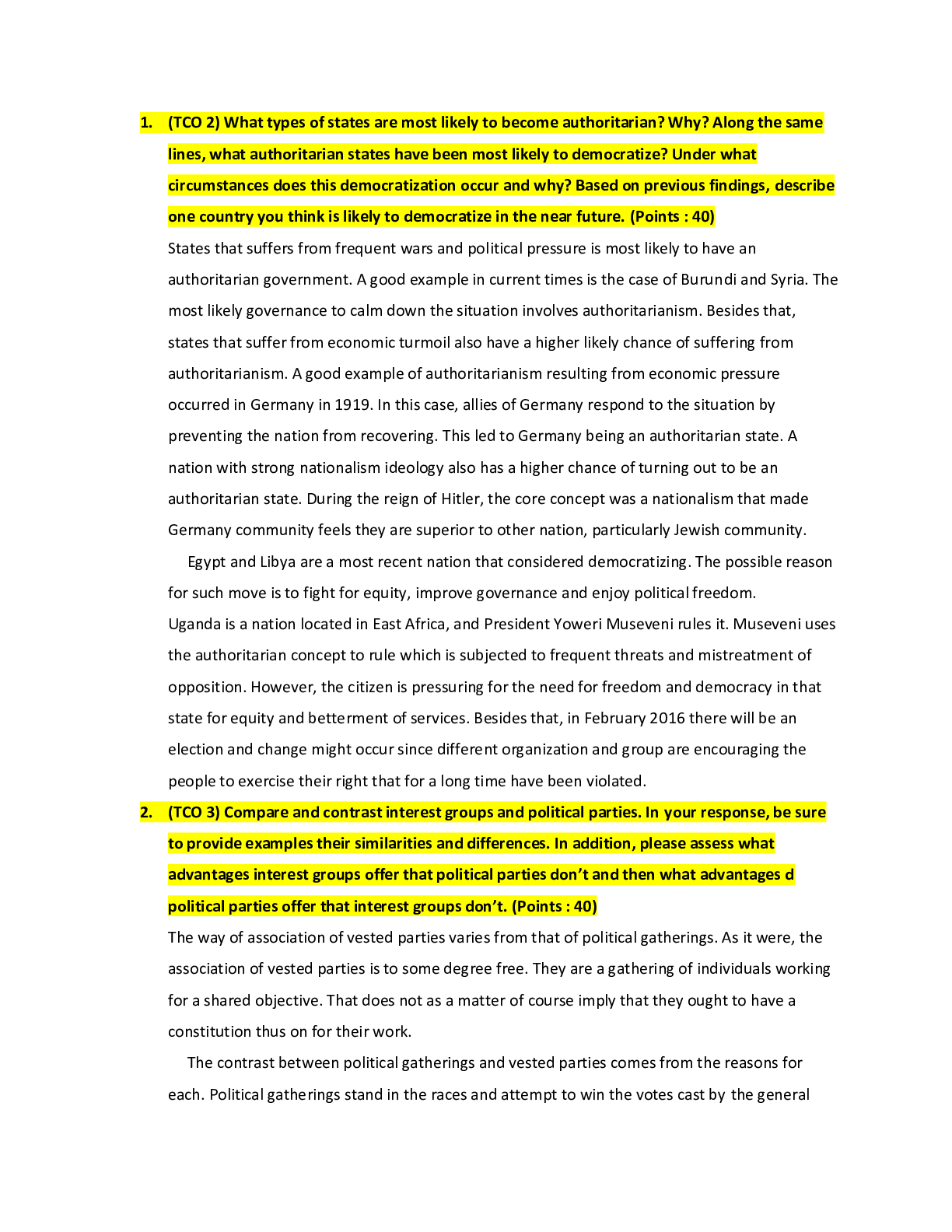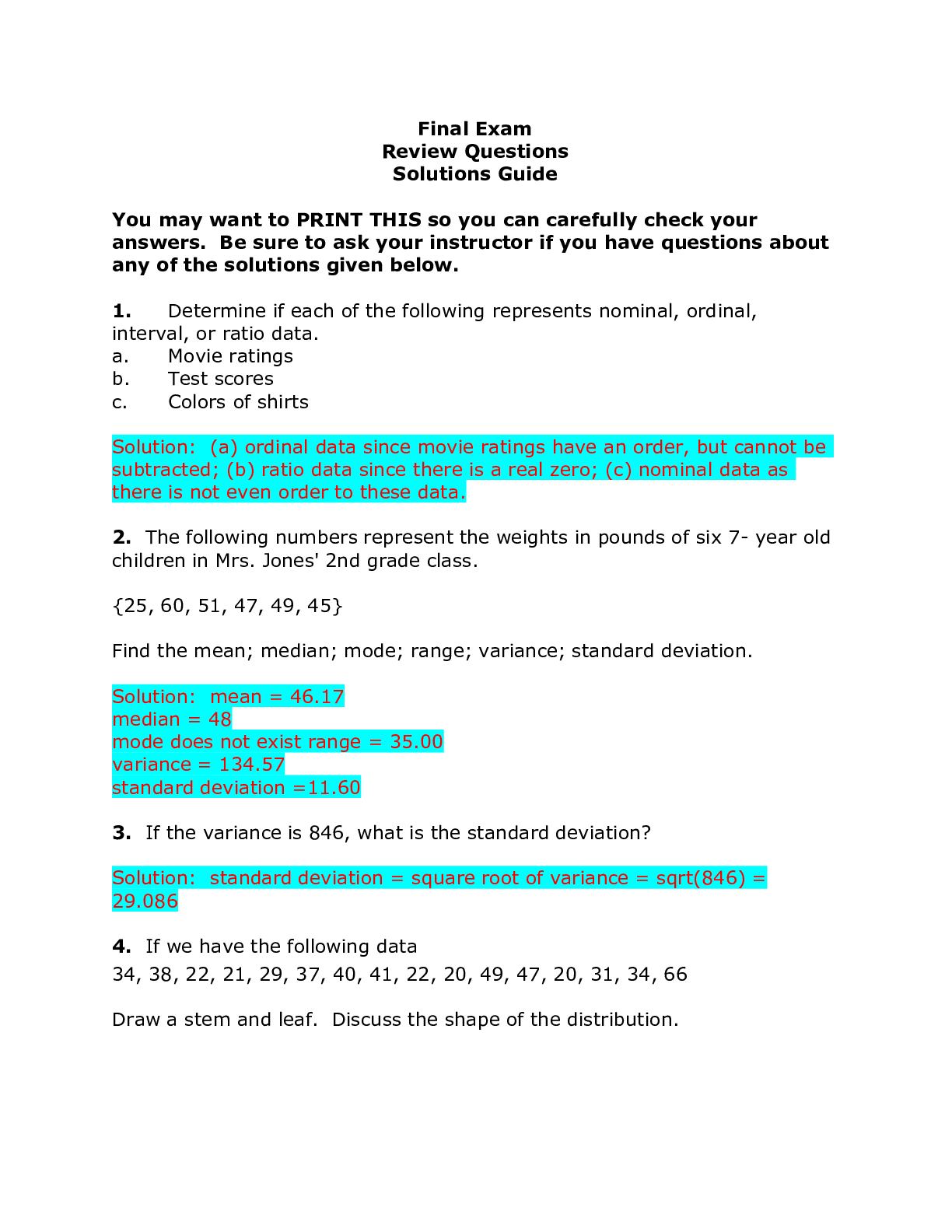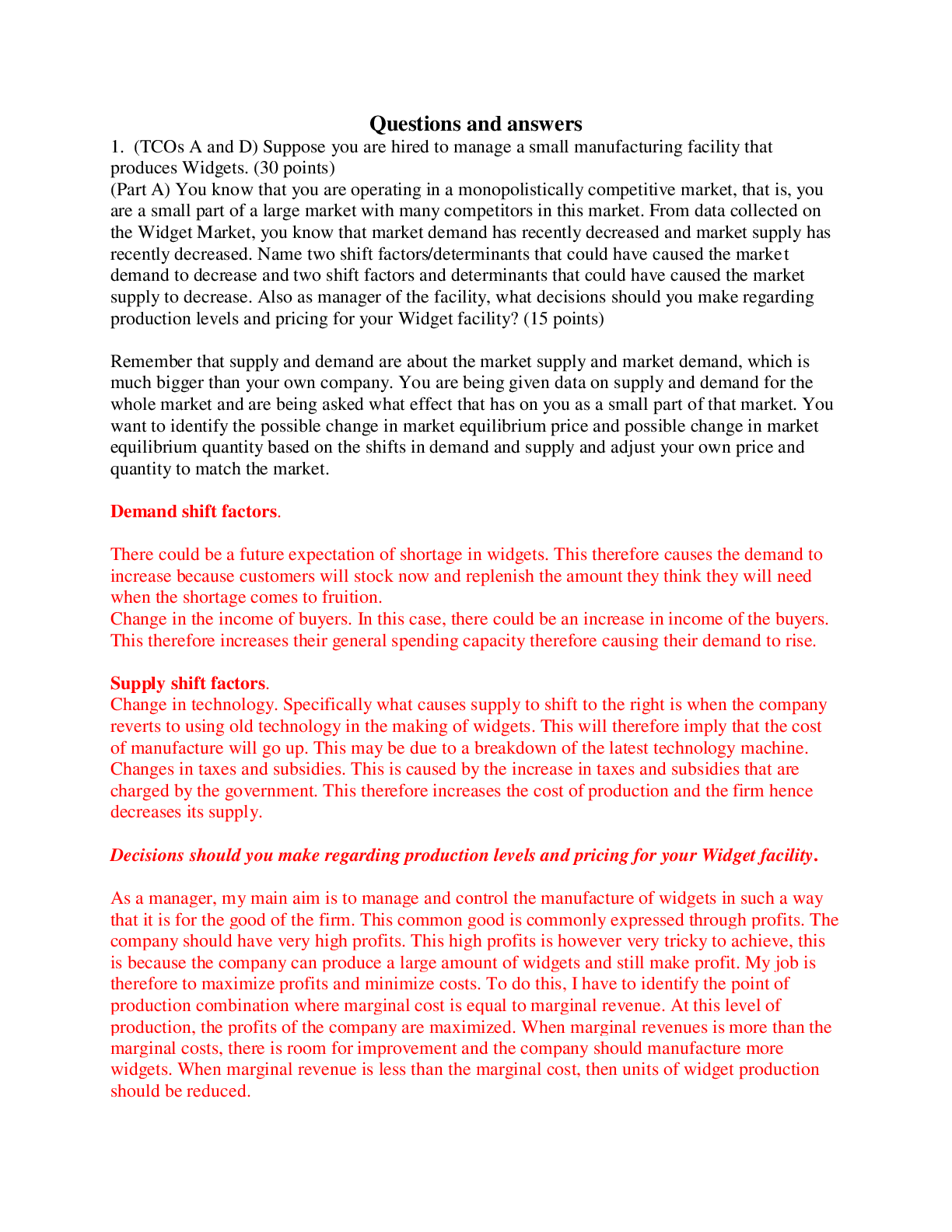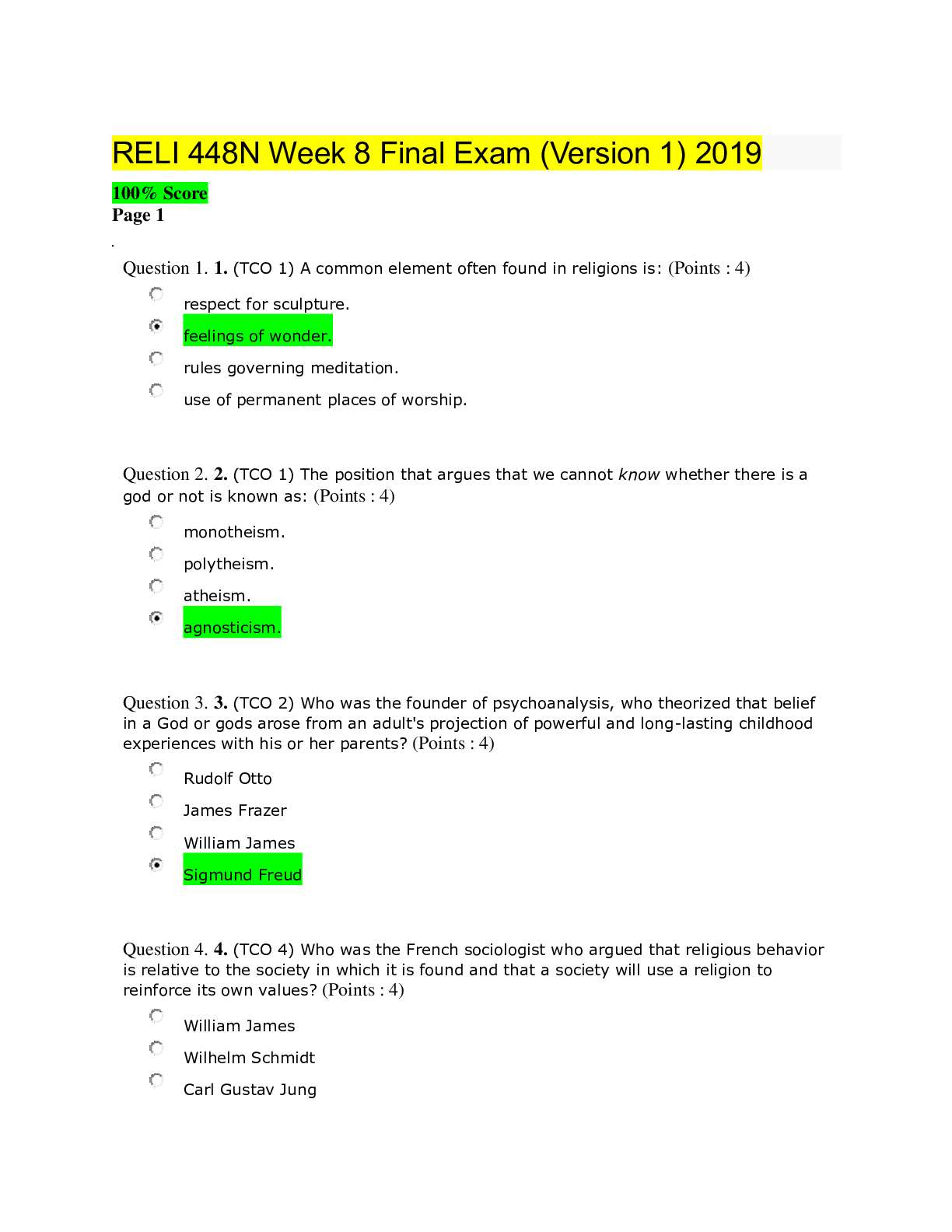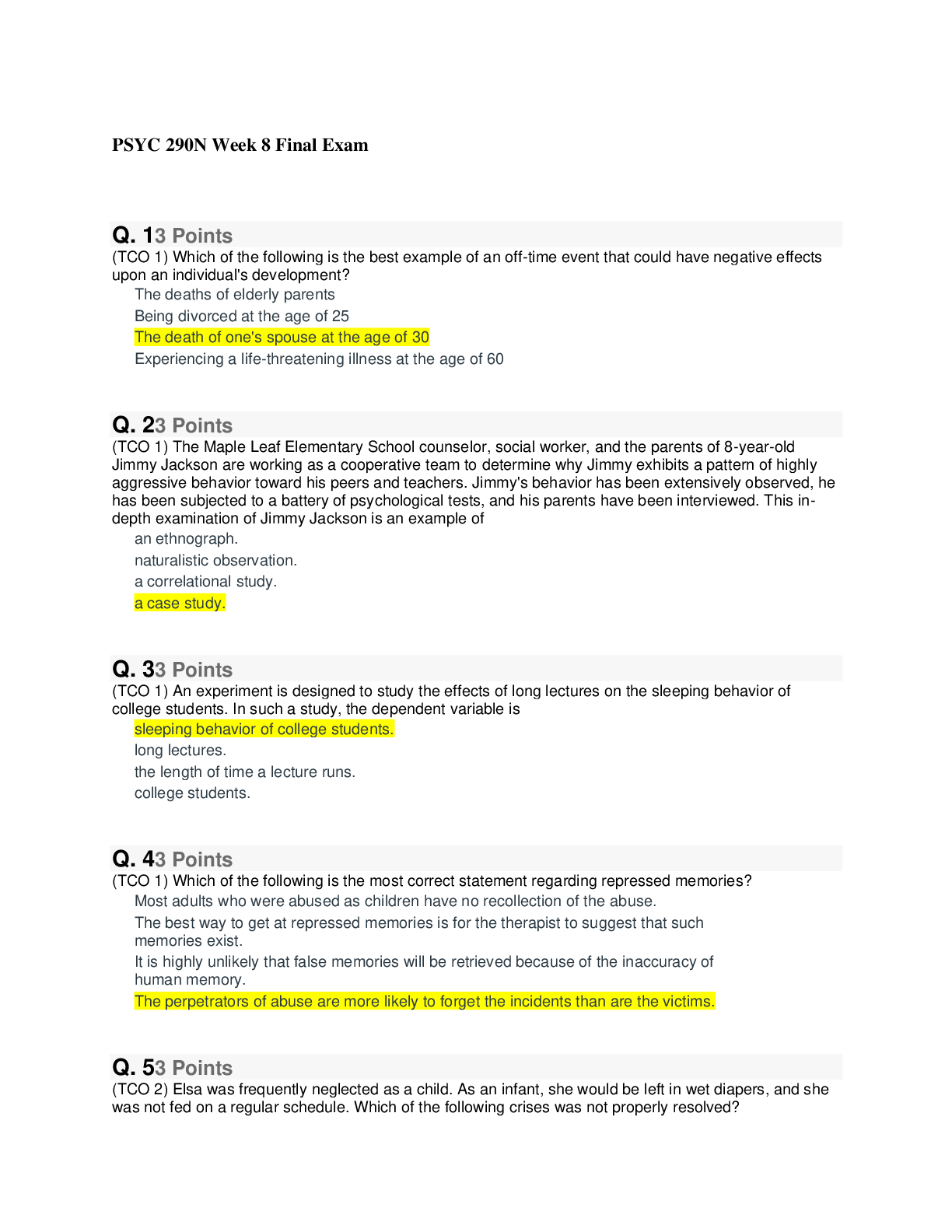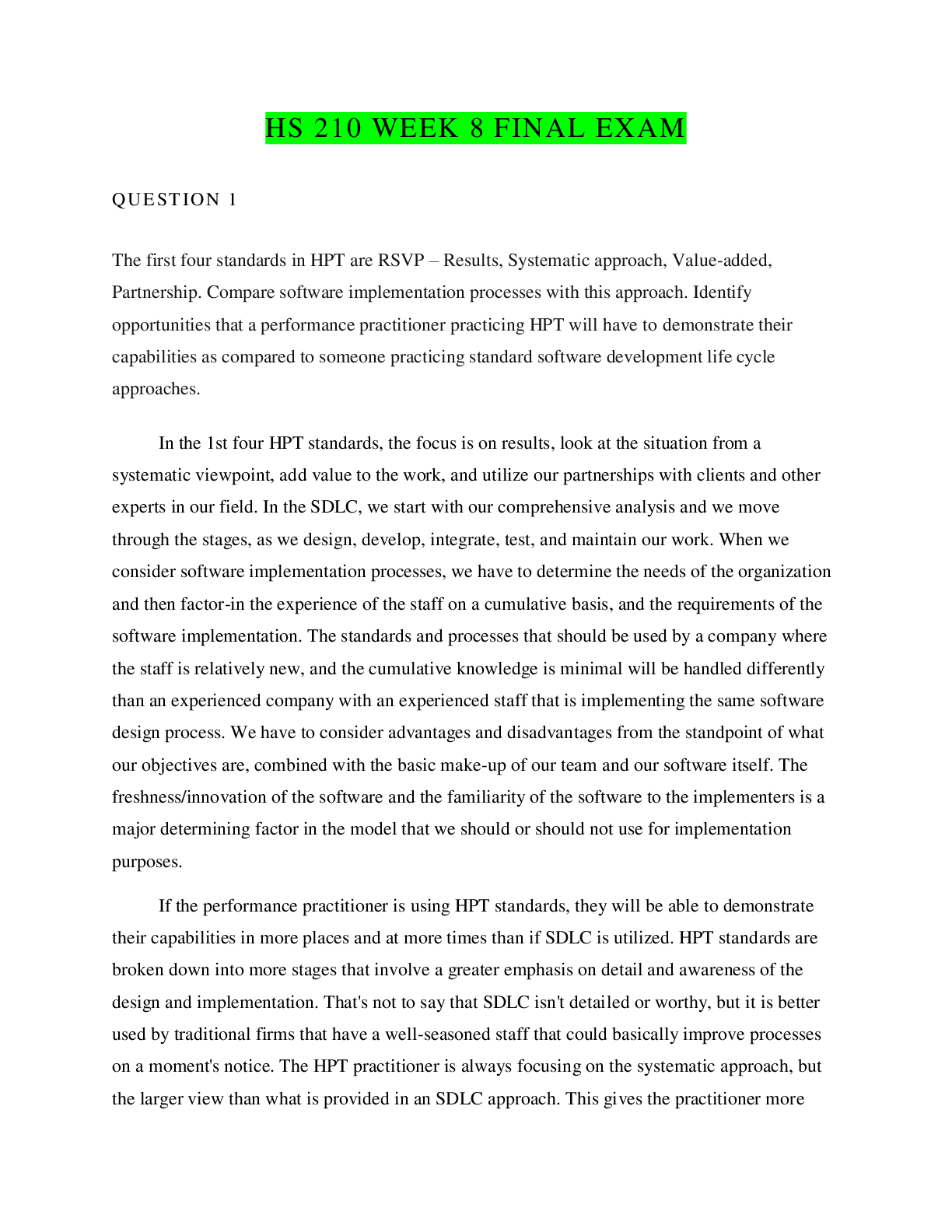BIS 245 Week 8 Final Exam Questions With Latest 100%
Document Content and Description Below
BIS 245 Week 8 Final Grading Summary These are the automatically computed results of your exam. Grades for essay questions, and comments from your instructor, are in the "Details" section below. Dat... e Taken: 2/25/2016 Time Spent: 3 h , 15 min , 24 secs Points Received: 220 / 270 (81.5%) Question Type: # Of Questions: # Correct: Multiple Choice 22 12 Essay 4 N/A Grade Details - All Questions Page: 1 2 3 Question 1. Question : (TCO 1) Databases create business value by: Student Answer: Facilitating transaction processing Providing data for decisions support systems Storing business data All of the above Comments: Question 2. Question : (TCO 1) What Microsoft Access feature would give a United Parcel Service (UPS) manager the ability to ask questions like “How many UPS tubes were shipped Monday?” and “What was the total revenue generated from UPS Express Box Large in November 2013?” Student Answer: foreign keys primary keys parameter query table connections Comments: Question 3. Question : (TCO 1) All of the following are Report Wizard Layout types EXCEPT Student Answer: block. outline. stepped. summary. Comments: Question 4. Question : (TCO 1) Which of the following is a/are question(s) that you should ask before you create an Access report? Student Answer: What is the purpose of the report? Who will use the report? How will the report be distributed? All the above questions should be asked. Comments: Question 5. Question : (TCO 1) A Detail line is used to Student Answer: print more detailed information on one record only. provide additional field information on a record. repeat data for each record in the record source. All of the above Comments: Question 6. Question : (TCO 2) A field that uniquely identifies each record in a table is a Student Answer: link. relationship. primary key. foreign key. Comments: Question 7. Question : (TCO 2) SQL is a fourth-generation language that is Student Answer: flat-file oriented and nonprocedural. oriented toward static data. procedural and record oriented. table oriented and nonprocedural. Comments: Question 8. Question : (TCO 3) Which of the following should be considered when designing a database? Student Answer: How calculated fields are used Store data in its smallest parts The relationship between attribute keys The relationships between records Comments: Question 9. Question : (TCO 3) Summarized data in an easy-to-read view is known as a Student Answer: design. PivotTable. report. table. Comments: Question 10. Question : (TCO 3) Which of the following does NOT describe a caption property? Student Answer: A label can substitute for a field name in Datasheet View. The caption appears in Datasheet View, Form, and Report. The label allows spaces between words. The label can be used in place of a field name in an expression. Comments: Question 11. Question : (TCO 4) Which function is used to isolate a specific portion of a date such as year, month, or day in a date field? Student Answer: Date DateDiff DateParse DatePart Comments: 1. Question : (TCO 5) To edit a form, use Student Answer: datasheet view. design view. layout view. layout view or design view. Comments: Question 2. Question : (TCO 5) Clicking on the form tool will open a(n) Student Answer: existing form. new form in design view. new form in layout view. wizard to design a form. Comments: Question 3. Question : (TCO 6) Which of the following describes a poor design consideration for a form? Student Answer: Arrange controls closely together or in a sequence that is easy to read by the user. Each form should have a different theme. Make labels descriptive and clear. Right-align labels followed by a colon and left-align bound controls. Comments: Question 4. Question : (TCO 6) After running a query, which view will be shown? Student Answer: Datasheet Design Query Result Comments: Question 5. Question : (TCO 7) When making vertical data comparisons, you should use the following chart. Student Answer: Bar Column Pie Scatter Plot Comments: Question 6. Question : (TCO 7) Which of the following statements best describes data mining? Student Answer: It is the determining of future volume of sales. It is the predicting of future customer buying behavior. It is identifying patterns or relationships through a process of analyzing large quantities of data. It is tracking customer purchasing behavior. Comments: Question 7. Question : (TCO 8) A switchboard is a Student Answer: form that looks like a menu or a series of menus that ties objects in a database. design tool to analyze and optimize a database. report that looks like a menu or a series of menus that ties objects in a database. screen that is used to hide objects from users. Comments: Question 8. Question : (TCO 9) Open Exclusive means that Student Answer: a password is required to open the Access database. only one person has access to the Access database at any time. only selected persons can have access to the Access database. two or more people cannot open the same Access database at the same time. Comments: Question 9. Question : (TCO 9) All of the following are true when a user creates their own self-signed digital signature EXCEPT Student Answer: a time stamp is not required to go through a commercial service or local server for processing. a time stamp will prove when the file was last used. it is created through another software application. it will prove that the creator owns the database. Comments: Question 10. Question : (TCO 10) ACCDE files Student Answer: deny users permission to create and change forms and reports within a database. deny users permission to create forms and reports but will allow them to modify forms and reports. give users permission to create and change forms and reports within a database. give users permission to fully access a database. Comments: Question 11. Question : (TCO 4) The term "cascading" refers to Student Answer: data changes travel from one table to another. data is put in sequential order. queries can retrieve data at a faster rate. records are arranged in order. Comments: 1. Question : (TCO 1) Designing a database often involves obtaining different perspectives from various sources to gather information. Discuss the importance of end user interviews in the data requirements gathering process. Student Answer: Data modeling helps to understand the information requirements. Data modeling differs according to the type of the business, because the business processes or each sector is different, and it needs to be identified in the modeling stage. Initial step is the analyzing the situation, gather data. Data modeling process starts with requirement gatherings. When developing the proper data model it is important to communicate with the stakeholders about the requirements. Data modeling is the act of exploring data oriented structures. This can be used for variety of purposes. One of the important functions of data modeling is that, it helps to understand the information requirements. Especially this makes both developers and end users lives easier. As mentioned above, data modeling helps the end users to define their requirements, and the developers are able to develop a system to meet those specified requirements. Comments: Question 2. Question : (TCO 2) Explain the purpose of a conceptual database model and describe the most common method of creating one. Student Answer: A conceptual data model is a summary-level data model that is most often used on strategic data projects. It typically describes an entire enterprise. Due to its highly abstract nature, it may be referred to as a conceptual model. Enterprise-wide coverage of the business concepts. Think Customer, Product, Store, Location, Asset. Designed and developed primarily for a business audience Contains around 20-50 entities (or concepts) with no or extremely limited number of attributes described. Sometimes architects try to limit it to printing on one page. Contains relationships between entities, but may or may not included to the database. Designed and developed to be independent of DBMS, data storage locations or technologies. In fact, it would address digital and non-digital concepts. This means it would model paper records and artifacts as well as database artifacts. Comments: Question 3. Question : (TCO 4) Explain the terms entity and attribute. Describe an example of an entity and then list two attributes. Using your examples, explain the data types that would be used to capture the attributes. Student Answer: In clinical data, the entity is typically a clinical event, as described above. In more general-purpose settings, the entity is a foreign key into an "objects" table that records common information about every "object" (thing) in the database at the minimum, a preferred name and brief description, as well as the category/class of entity to which it belongs. Every record (object) in this table is assigned a machine-generated object ID. The "objects table" is now standard in most large bioinformatics databases. The use of an objects table does not mandate the concurrent use of an EAV design: conventional tables can be used to store the category-specific details of each object. In the EAV table itself, this is just an attribute ID, a foreign key into an Attribute Definitions table, as stated above. However, there are usually multiple metadata tables that contain attribute-related information, and these are discussed shortly. Comments: Question 4. Question : (TCO 4) Explain 1NF, 2NF, and 3NF as related to database design. Student Answer: The database utilized for the design for data entry. This makes it possible that all information is all input into individual table of categories. This makes it impossible for information to not be duplicated and do not repeat themselves. 1NF :As per 1NF, no two rows of data must contain repeating group of information. In all, each table must be organized into rows, and each row should have a primary key that distinguishes it as unique. 2NF: As per 2NF, There must not be any partial dependency of any column on primary key. 3NF: As per 3NF,every non-prime attribute of table must be dependent on primary key. It removes the transitive dependency . Therefore, by noting all of the information if the 1NF, 2NF and 3NF make it possible to fulfill all of the information needed to complete the database. This is a very important contribution to make a report and get a clear table all of data. [Show More]
Last updated: 2 years ago
Preview 1 out of 9 pages
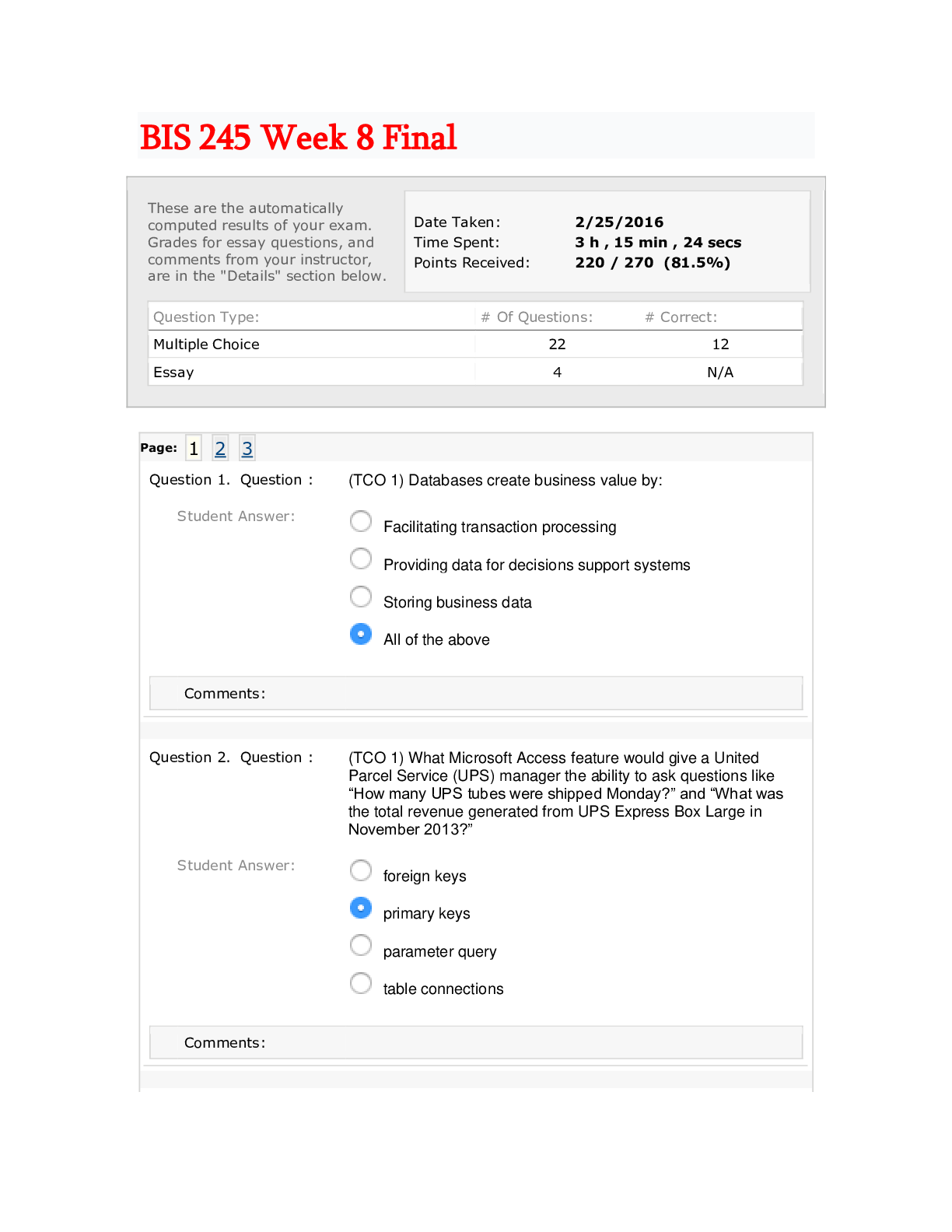
Buy this document to get the full access instantly
Instant Download Access after purchase
Buy NowInstant download
We Accept:

Reviews( 0 )
$8.00
Can't find what you want? Try our AI powered Search
Document information
Connected school, study & course
About the document
Uploaded On
Mar 08, 2021
Number of pages
9
Written in
Additional information
This document has been written for:
Uploaded
Mar 08, 2021
Downloads
0
Views
57

.png)





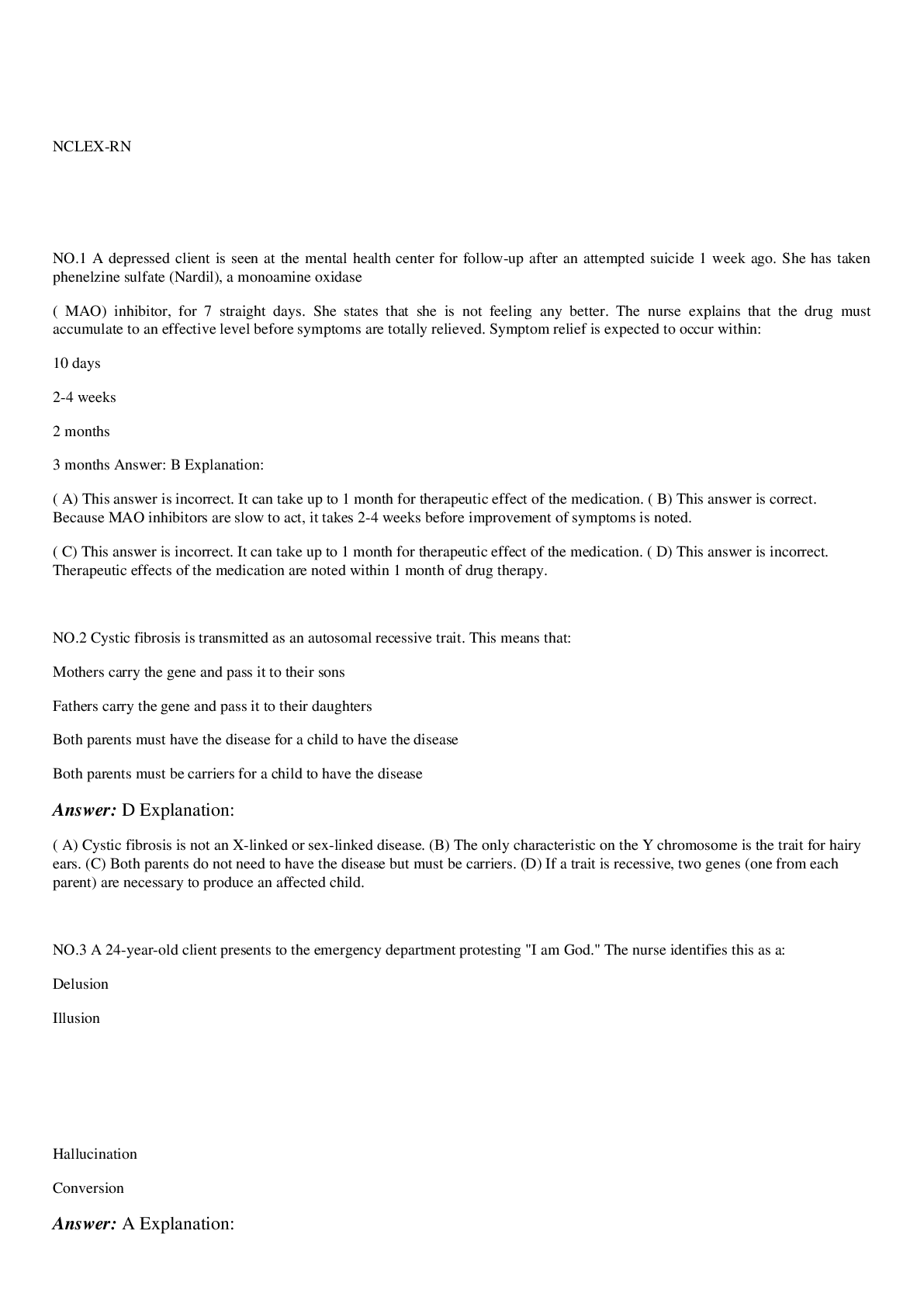


.png)


